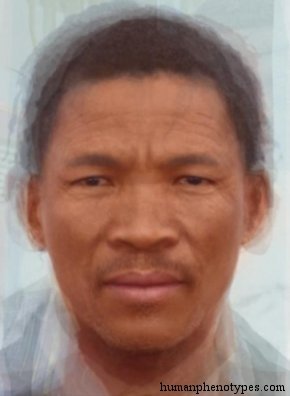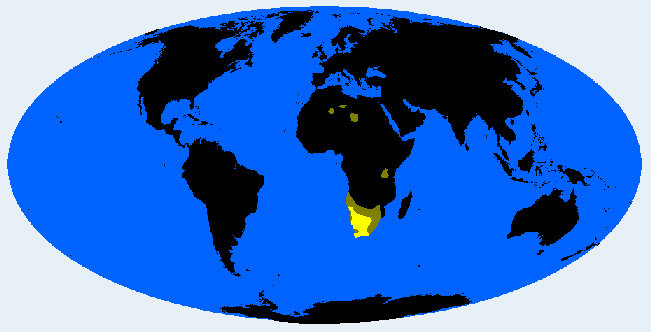Description:
Special group, typical for the old agricultural population of Southern Africa with many unique features, adapted to dry climate. Very ancient and distinct. Stature is rather short, the bodies are lean, women show steatopygia. The skin is yellowish light brown, often wrinkled, peppercorn hair common, nose very wide, eye folds are frequent, the skull is long and low with little prognathy. Compared to the similar Sanids, Khoids are taller, less infantile, faces longer, chins more pointed, heads longer, the convex upper lip is absent. Was more widespread across Southern Africa until Bantu and European colonisation almost wiped it out. Besides the Khoid (proper), distant relationships to East African types may exist (Sandawe, Hadza) as well as to North African types (Paleo Saharid). The almost extinct Strandlooper type seems to be an ancestral form.Names:
Khoid (Eickstedt, 1952; Lundman, 1967; Knussmann, 1996), Khoinid (Eickstedt, 1934), Hottentot (Deniker, 1900; Hooton, 1946; Cole, 1965; Vallois, 1968; Debets, 1974; Vogel, 1974) , Ottentotta (Biasutti, 1967), Homo hottentotus (Bory, 1827; Fischer, 1829).




